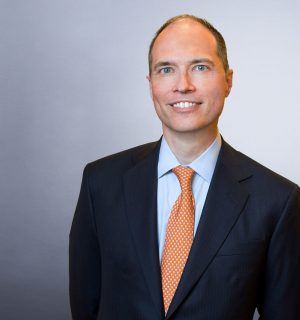News and Insights
Tips for Investor Relations Success in 2023: Lessons Learned at JPM
January 20, 2023
After three years of virtual events demanded by the global pandemic, the healthcare investment community kicked off 2023 with a return to traditional style with the in-person, non-virtual annual JP Morgan Healthcare Conference in San Francisco. With a full slate of investor presentations, plus dozens of other business meetings surrounding the four-day event, the forum made it clear that activity and interest in the healthcare sector remains high. How that interest translates into partnership, investment, IPO and M&A activity remains to be seen in the weeks and months ahead, but several important trends were hot topics at the conference.
The difficult financing environment in 2022 will continue in 2023. Potential drug pricing controls contained in the Inflation Reduction Act passed by Congress last year have investors nervous about potential constraints on revenue growth, which may lead to more conservative investment strategies. Dilutive funding options, which have often been a lifeline for cash-strapped companies, seem less desirable due to historically low valuations and an increasingly empowered retail investor community demanding near-term returns, even at the expense of long-term growth and survival. Lingering supply-chain challenges – as well as a rising interest rate environment, inflationary concerns, shifting political headwinds and global unrest, are adding uncertainty to investment models and revenue forecasts.
Another emerging trend is that the M&A landscape is likely to favor companies with commercial or later-stage clinical assets. Two of the three M&A deals announced at the start of the conference were for companies with approved therapies (Chiesi’s $1.25 billion acquisition of Amryt Pharma and Ipsen’s $925 million acquisition of Albireo), while AstraZeneca’s $1 billion buyout of CincCor Pharma brings it an asset with robust Phase 2 data.
Awareness of these trends is essential for navigating the healthcare industry in the year ahead, but what steps can investor relations and communications professionals take to help keep their ships afloat in the anticipated unpredictable seas?
The FINN Investor Relations and Media Teams sat in on numerous meetings between our clients and investors, analysts, potential partners and journalists, allowing us to gain insight into how investor relations and communications strategies can help — or hurt — companies positioning themselves for success in 2023. Here are our recommended tips for success:
- Set realistic goals and timelines – and meet or exceed them
Exciting science and technology are not enough to create value. Successful and timely execution of development plans and attainment of milestones are essential for instilling confidence in investors and partners that your team has what it takes to get from the bench to bedside, on budget and on time. With the potential for lingering supply-chain issues and resurgent COVID-19 outbreaks that could negatively impact clinical trials and manufacturing, a conservative approach to setting milestones is likely warranted. Missing a milestone will hurt you more than successfully meeting a slightly longer timeline.
- Data don’t always speak for themselves
Clearly communicating the strengths and weaknesses of clinical data is more critical than ever for ensuring that your assets are fairly valued. However, not every institutional investor is an M.D. or Ph.D. Cutting through the jargon with understandable terms and clear messages so that investors can quickly grasp key points is essential in grabbing headlines and mindshare. Dig deeper into the data with those who are more familiar with the science. Additionally, helping investors and potential partners understand how your program compares with commercial or clinical competitors is essential for successful positioning.
- There’s more to IR than quarterly calls
In an age where people have become accustomed to real-time updates and alerts on news that matters to them, there’s more urgency and greater expectations; deliver timely updates rather than wait for announcing quarterly financial results. With virtual meetings now a regular part of business life, companies need to think creatively about how to engage with investors and potential partners so they understand how your company and its programs fit in to the larger corporate, product and disease-indication landscapes. An effective way to do this is to develop events that let these key audiences interact with key scientific and medical opinion leaders, patients and advocacy groups. These events used to be more challenging and expensive to organize when everyone expected them to take place in person. However, the ability to organize virtual or hybrid formats gives IR and communications professionals the power to bring important voices together in new and highly informative ways.
- Set your sights on the right financial community targets
Reaching out to investors, bankers and analysts in ways that do not fit their investment philosophy or coverage universe is inefficient and usually ineffective. Developing a well-structured targeting strategy that identifies financial community members most likely to be interested in your programs and technologies will minimize wasted time and unreturned emails and phone calls.
- It’s never too early to plan for JPM 2024
Given intense day-to-day demands, it’s understandable for CEOs and CFOs to not have next year’s JPM at top of mind, but that could be regrettable. Initiating a process to prepare as early as possible is critical to ensuring you develop the messages that truly resonate with the financial community. Rushing this process or “cramming” often results in messaging “holes” or, even worse, errors. Seasoned analysts and investors are savvy enough to know who puts time and effort into their corporate presentation. The process does not stop at the end of the conference; get immediate feedback and insights that can be used to refine your messaging and investor thesis as you execute on your 2023 IR communications plan.
Finally, as in years past, there was much hallway speculation as to whether JP Morgan will move its conference to another location. This year, the weather and the high cost of hotels in San Francisco were discussed as possible reasons for a move, with Las Vegas and Austin frequently mentioned as alternative. However, our sources tell us that JP Morgan is committed to San Francisco for the near-term, so you may want to book your hotels soon.

